I started sayonara zetsubou sensei a few days ago.
I always wonder, especially with shows like this, how many references or Japanese plays on words go completely over my head in the dialogue.
Either way the parallels between zetsubou and monogatari are apparent by the first episode. The show literally starts off overflowing with character, can only be excited for where it goes from here.
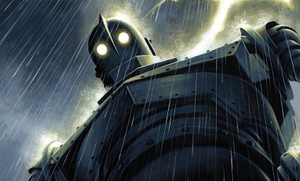 Scooter
ScooterI started sayonara zetsubou sensei a few days ago.
I always wonder, especially with shows like this, how many references or Japanese plays on words go completely over my head in the dialogue.
Either way the parallels between zetsubou and monogatari are apparent by the first episode. The show literally starts off overflowing with character, can only be excited for where it goes from here.
Shinbou 🐐
 Scooter
ScooterI started sayonara zetsubou sensei a few days ago.
I always wonder, especially with shows like this, how many references or Japanese plays on words go completely over my head in the dialogue.
Either way the parallels between zetsubou and monogatari are apparent by the first episode. The show literally starts off overflowing with character, can only be excited for where it goes from here.
SZS was like one of my first 50 shows so I didn't even recognize references to stuff like Evangelion, Jojos, Precure, Ghibli, Death Note, etc., so if you're watching it with the amount of series you've watched you'll definitely understand more of them than I did lol.
You can read some of the references here tvtropes.org/pmwiki/pmwiki.php/ShoutOut/SayonaraZetsubouSensei but its mostly obvious ones. You'll probably recognize some more obscure stuff on your own.
All gifs in order
Gurren Lagann Episode 2 (2007)
Gurren Lagann Episode 13 (2007)
Gurren Lagann Episode 27 (2007)
Gurren Lagann Parralel Works Episode 6 (2008)
Gurren Lagann The Lights in the Sky are Stars (2009)
Gurren Lagann Parralel Works Episode 5 (2010) first two cuts only
Panty and Stocking with Garterbelt (2010)
The Idolmaster (2011)
Kill La Kill (2014)
Denkou Choujin Gridman: Boys Invent Great Hero (2015)
Space Patrol Luluco (2016)
Little Witch Academia (2017)
SSSS Gridman (2018)
Promare (2019)
SSSS Dynazenon (2021)
Gridman Universe (2023) Direction and SB only, KA by Shingo Abe and Ichigo KannoHappy Belated Birthday to Akira Amemiya born November 30th. The fourth, and most venerable high-tier staff member of formerly Gainax and now currently Studio Trigger. Up their with the likes of Hiroyuki Imaishi, Yoh Yoshinari, and Sushio Amemiya was one of the last to become one of the next great Gainax animators making his initial splash on Gurren Lagann. Joining the studio as a fan of Imaishi’s work, Amemiya has many similarities to Imaishi but is reliant on retro-devices, like pose heavy combat, and an even more minimal Kanada inspired style, with very limited shading in his work, opting for timing that fluctuates between 3’s and even 4s. As a huge mecha nerd Amemiya will apply as many mecha and tokusatsu- esque visual motifs as he can giving his animation, and even directed episodes that old school flare, really inspired by Masahito Yamashita and Masami Obari. For years Amemiya had been an episode director, until the opportunity arose to direct his own Gridman short video, and eventually a series. When SSSS Gridman, and subsequently SSSS Dynazenon came out Amemiya became perhaps Studio Trigger’s best director, incorporating his love and knowledge of the two series into an essential viewing for anime watchers and tokusatsu fans alike. This is Akira Amemiya.
Before anime Amemiya graduated from Tokyo University of Technology and was involved a lot with the university’s anime research society. He enjoyed following a lot of anime groups one being Group CAS where Toshiyuki Sato was a part of the group, along with later director Hiroshi Ikehata.
Amemiya got his start on working on the Shaft and Gainax collaborative show This Ugly Yet Beautiful World. He’d then work on Gunbuster, Monte Cristo, and debuting as a key animator on He is my Master. His first hints of mecha inspired action came on Daiking joining Sushio and Imaishi. Although his first true display of power was on a movie called Unbelievable Zorori
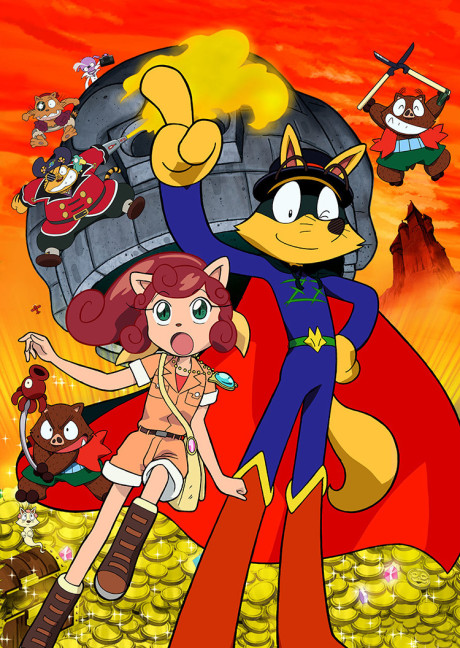
Amemiya for some did a total 4 minutes of KA on this kids movie, and was a total pro here. Though very simple in his approach the sheer amount of animation he’s able to compact into his scenes is award worthy. Everything from Ashita Joe baseball swings, Yamashita inspired smoke plumes, and an Indiana Jones inspired boulder chaseAmemiya after obviously proving himself on Zorori was brought on to Gurren Lagann by Imaishi at just 23 years old
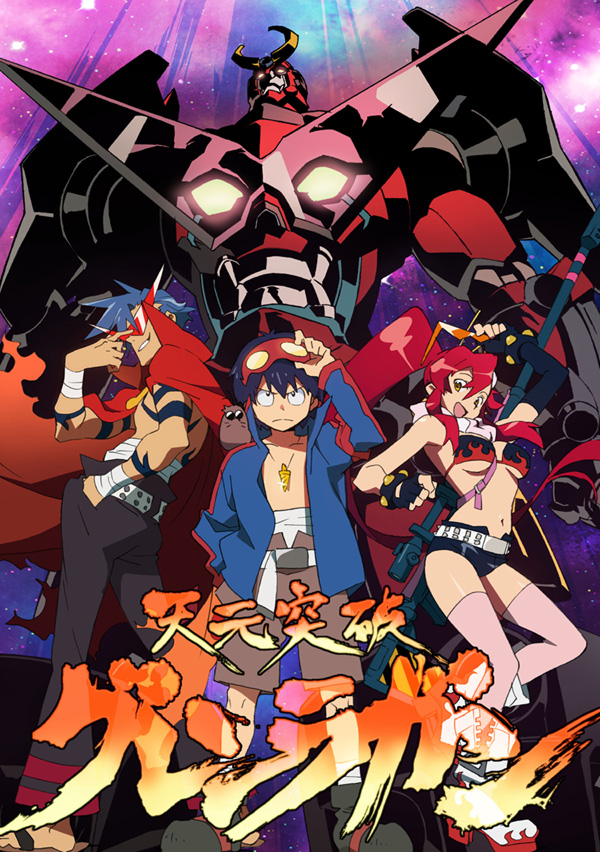
23 is a pretty young age to come up as a key animator, usually taking years to amass a lot of serious skill, but just as the case was with Yoshinari, Imaishi, and Sushio, Amemiya rose to be a young prodigy, being the most frequent animator on the Gurren Lagann series. Amemiya himself was the big dog of the show, coming into his own like Yoshinari did back on Evangelion. Amemiya did a total 14 different episodes on the show, pretty much half of the entire series run, and was unstoppable from the get-go. From Episode 1 to the end Amemiya indulges in his pose heavy Kanada style action, opting for one great scene after the other. A first highlight being Episode 2 where Amemiya does a lengthy action scene with an unknown animator. I love he’s able to do so little with a lot of detail in his animation yet instill so much character and personality.On Episode 5 Amemiya was in charge of the mecha combat doing a lot of entertaining scenes despite the rather dull compositing in this episode. We get Amemiya’s full AD debut on Episode 7. Where his style envelopes all of the action scenes. Storyboarded by Shin Itagaki, Amemiya lets the senior animators flourish in the fun and playful mecha action the show is known for. There is a lot of inky speed lines coming in a lot of scenes, and they carry strongly through the battles. Chikashi Kubota and Sushio do a nice fight in the middle making up pretty much the highlight of the episode. There are lot of tilted angle shots with nice foreshortening, and Amemiya himself is able to show off some of his own animation, doing some nice retro esque artwork that was contrapuntal to some of the design sheets Yoshinari made for the Gurrens.

This is one of the few shots where Amemiya will go for this level of complexity in a layout, luckily this is just a still frame with the classic Kanada Light FlareHe’s able to maintain a really high level of quality throughout the rest of the Episodes with another highlight on 13 a prolonged aerial battle with fantastic layouts and one shots. The hits kept on coming throughout the rest of the season, even after the time skip where Amemiya still is able to make up for doing some insane s***. The last episode has Amemiya trying his hand at hazy impact frames that look fantastic
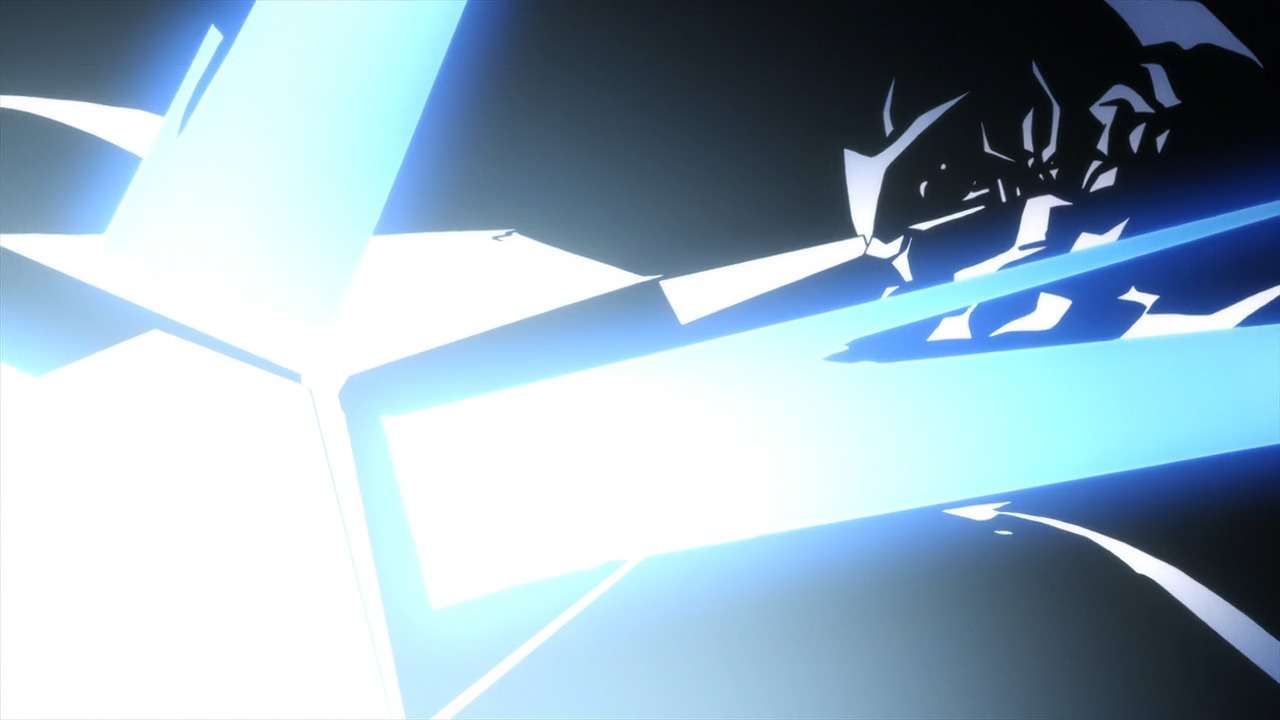
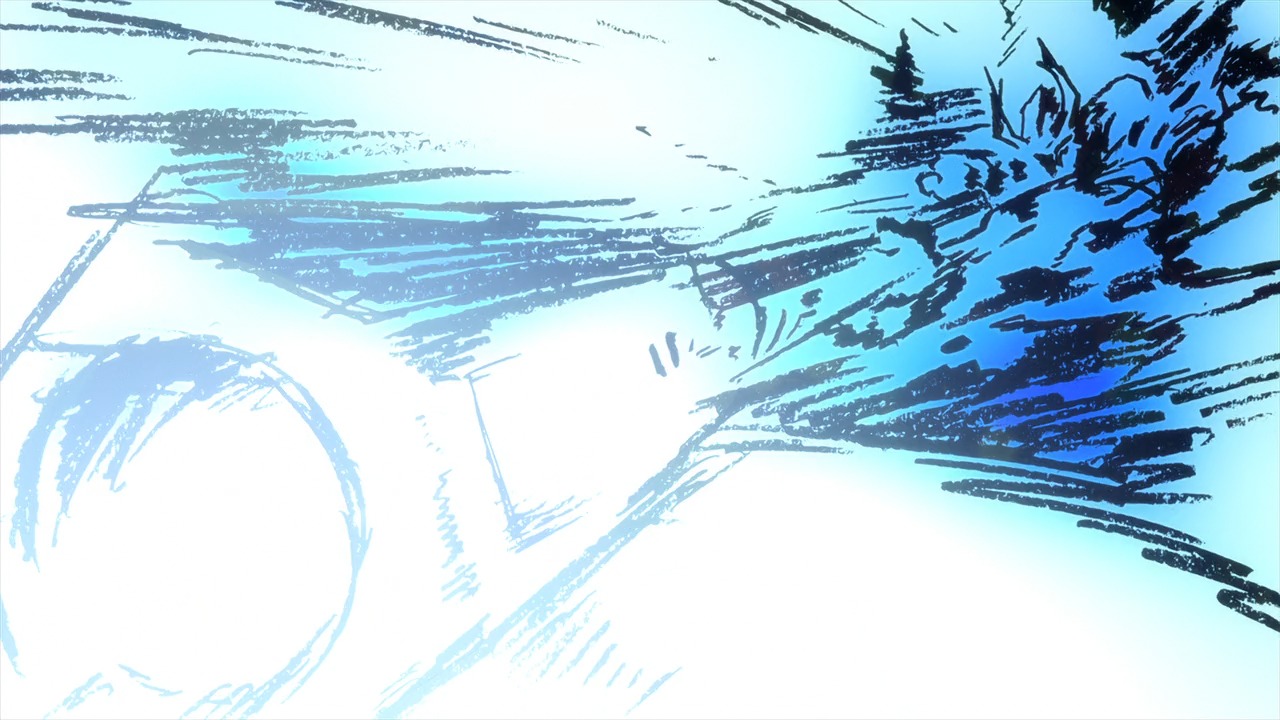
Closing out this part of Amemiya’s journeyAmemiya was quite the freelancer post Gurren Lagann doing work abroad on shows like Kaiba, Psychic Squad and Zetsubou Sensei. Later Amemiya was asked on to the sixth episode of the Gurren Lagann Parallel Works music videos, where he got his first credit as a director. Amemiya tends to be a sole key animator on his own short directed projects as he shows off his jank action prowess throughout, all culminating in the end with this crazy missile cut
After finishing Parallel Works it was back to freelancing where he was on Toradora, Fullmetal Alchemist assisting fellow Kanada action animator Yoshimichi Kameda, and then on Corpse Princess Amemiya was placed on lead animator on to a fight scene with actual anime characters. Amemiya rarely animates fights between people so seeing him do it here and so perfectly is especially captivating
For the last Gurren Lagann film known as The Lights in the Sky are Stars Amemiya got to perfect a lot of his art from the back half of the original series, as the movie is an abridged retelling
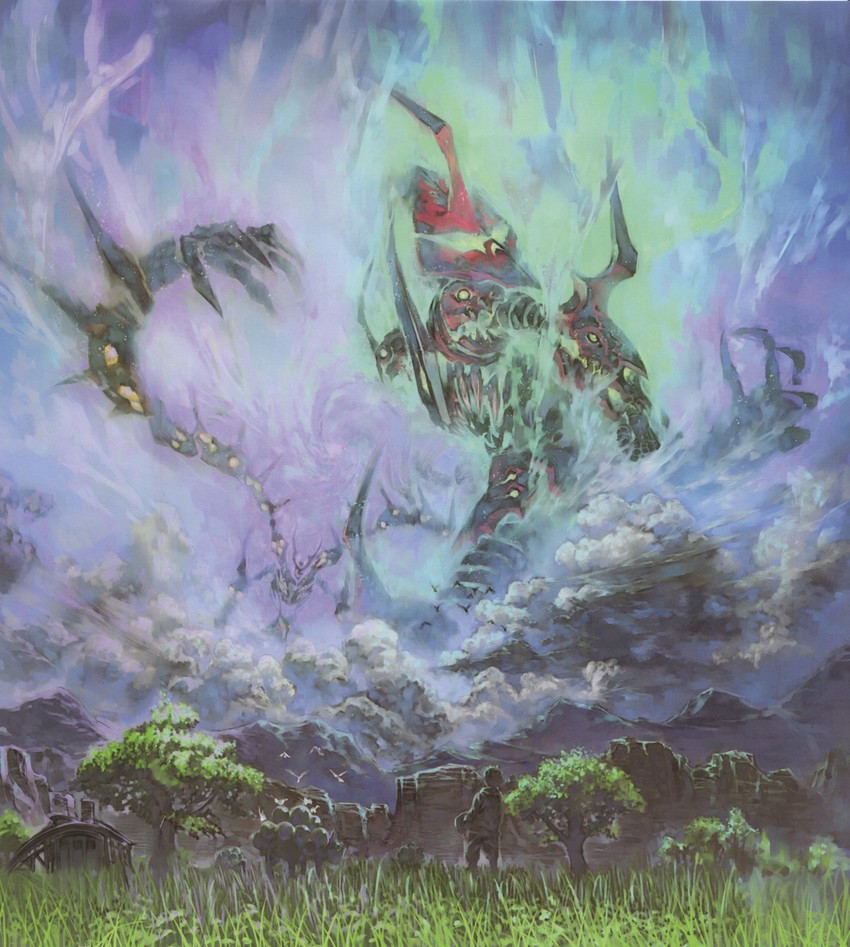
Amemiya helmed in on the moon attack sequence, where in this version the moon transforms into Cathedral Lazengann. Arc Gurren attacks and Amemiya’s during this section are especially nice big and empowering Obari style posing.


Later in the film he does another almost Ichiro Itano inspired flight sequence.After a bit of freelancing for a few months, Amemiya joined the Gainax boys back on Panty and Stocking with Garterbelt

A raunchy play on mid to late 2000s American cartoons, Imaishi was no hold’s bars for the goofs on this series. A lot of new talent came in the door of Gainax around this time, Masaru Sakamoto who would be really important to Amemiya 8 years down the road, Mai Yoneyama who despite her seldom appearances on tv anime is one of the most prestigious animators coming out of the Gainax/Trigger hemispheres, and though unrelated to the studio, hailing from Doga Kobo, Megumi Kouno who would ultimately become not just a stellar animator and AD on The Idolmaster series and beyond, but the love of Amemiya’s life as the two would get married in the future. Amemiya once again is on fire here putting on a lot of impressive scenes. Amemiya is doing little to no mecha related action in this series, instead taking time to animate more fluid character motions. The A section of Episode 3 is a pretty good example with Panty and Stocking doing their signature finishing moves on the demons.Amemiya isn’t completely dismissing mecha as Episode 7 is a complete and utter parody of the Transformers series

Filled to the brim with references to the series, just for reference sake, even going as far to reference the Michael Bay films which were fairly recent at the time of this episode airing, Amemiya got to work under Kouno’s design sheets and boards for this ridiculous episode. Wakame Shadow legend Jun Arai was one of the top credited animators on this section as some shots are readily apparent with his busy shading techniques. Although, the gags overshadow the animation obviously
The later episodes have more full movement from Amemiya doing some tightly boarded fight scenes
Back to freelancing, from after Panty and Stocking to 2011 Gainax essentially began to slowly fall apart. This lead to the temporary departure of several animators wanting to go do other projects, namely Gurenn Lagann and Panty character designer Atsushi Nishigori on the aforementioned The Idolmaster

Tadashi Hiramatsu, Yoshinari, Kubota, and Amemiya all migrated from Gainax over to A-1 Pictures to help on a handful of episodes of Nishigori’s debut series. Amemiya delegated himself to a second key animator (touch up animator) for several episodes, I am going to assume part of his reasoning so he could spend time with Kouno. Amemiya smartly placed himself on a hilarious insert play on Episode 15 where Amemiya AD’d and designed the mechanical portions of the episode, on a show normally focused around music
All Amemiya
Storyboarded by Imaishi, it is in the realm of full blown spinoff material that might have actually worked.Amemiya went back to freelancing, showing up on quite a few episodes with Kouno. The two were basically a couple collaborating freely together, whether it was Episode 5 of Mystic Archives of Dantalian, Amemiya directing Episode 5 of Black Rock Shooter with Kouno animating, or both on Sword Art Online Episode 8, the couple were making themselves known.
After working on the Idolmaster Shiny Festa with Kouno, Amemiya got to direct his first series at studio Trigger, the spoof laden, Adult Swim x Newgrounds inpired Inferno Cop

A strange s***-post web series, here is the Wikipedia synopsis“The series centers around the adventures of Inferno Cop, a police officer with a flaming head who seeks revenge after his family was murdered by Southern Cross, a shady, Illuminati-like organization that attempts to control the world with its various monsters and thugs. Inferno Cop dispenses ruthless justice on all lawbreakers he can find in Jack Knife Edge Town, generally by blowing them up, shooting them dead or both. Inferno Cop rapidly goes from one ridiculous incident to another, including fighting a newborn baby, travelling through time, fending off a zombie apocalypse, turning into a car for several episodes, and killing a mummy and becoming the new pharaoh after mishearing his sidekick's dying words. He ultimately tries to halt Southern Cross' attempts to bring about an end of the world with Inferno Cop as the key.”
This show has no animation, with basically this comically weird cutouts of characters in one pose with Amemiya’s voice actors spewing out nonsensical dialogue. It is definitely a bizarre experience, and is it funny? Yes to some extent.
First three episodes



After Inferno Cop ended, Amemiya served as a primary assistant director on Imaishi’s debut studio Trigger anime saving classic Kill La Kill

Sushio’s first debut as a character designer, and Studio Trigger’s first two cour until Little Witch Academia’s tv version. Despite the praise, and overwhelming degree of talent Kill La Kill had a very tough schedule as illustrated by some of the behind the scenes shenanigans going on, resulting in cost-cutting animation and a lot of outsourcing to freelancers outside of this burgeoning new studio. Amemiya was the lead director on Episodes 3, 11, and 21. Episode 3 best illustrated Amemiya’s directing prowess with impressive boards brought to life especially in former Gainax and realist legend Takeshi Honda animating both Satsuki and Ryuuko’s transformations
The ensuing fight is extraordinarily riveting, with Mai Yoneyama’s stunning AD work adding more effects to titan animators. Gundam animator Osamu Yamane opens the fight with Ryuko exchanging a series of blows, then when things get serious we transfer over to Amemiya and Imaishi’s idol Masahito Yamashita who serves up a helping of swelling smoke and debris effects, once Satsuki has the upper hand new Trigger animator at the time Yuuto Kaneko closes everything out.
Amemiya directed Episode 11, with Toshiyuki Sato handling the brunt of Nonon and Ryuko’s fight The episode is best known for the B****HHHH scene

Episode 21 also has a lot of Amemiya’s hand with his boards being obliterated by Yuuto Kaneko once again

Amemiya also directed episode 25, which was technically an OVA unreleased episode for a while

Imaishi presumably animated Ryuko’s giant scissor scene
After Kill La Kill ended it was back to freelancing coming on to Space Dandy and a few, but Amemiya got the opportunity to do something big. Something he always wanted to do. At the time Trigger was founded there was a lot of shows Hiroyuki Imaishi and Masahiko Otsuka both wanted to help represent the studio’s catalogue, Tsuburaya Productions approached Trigger with ideas for a collaborative effort and Imaishi and Otsuka ultimately decided if it were to be an Ultraman anime Amemiya would be the right choice. Though Amemiya got turned down for Tsuburaya’s golden goose there was an Animator Expo even being held from late 2014 to late 2015. Organized by Hideaki Anno and Studio Khara, the entire spotlight was meant as a vehicle for dozens of studios across Japan to show original anime shorts unrestricted from studio interference, that also acted as pilot ideas for potential series.

Amemiya was given a choice between Tsuburaya for two shows, Andro Melos or Gridman. Amemiya had very fond memories of watching Gridman as a child and with his already nostalgia induced animation style, and love for Takara model toys it was only right for him to take on the material and no one else.This lead to the creation of his first spin on the Gridman series, Denkou Choujin Gridman: Boys invent Great Hero!

Amemiya Solo KA
A shocking five minutes of uninterrupted Amemiya direction, animation, and storyboards. The story centers around an older Takeshi from the original series having fond memories over the battles from the original live action tv show. What we get after is every single reference and pose from the tv show Amemiya can cram in with his lovely and simple animation tightly wrapping everything together in a beautiful package of tokusatsu bliss. This comparison video shows just how accurate Amemiya was
The ending is also fantastic with Takeshi revealing his own acceptor turning into Gridman Sigma. This short had a heaping of praise from fans of the original series and from Tsuburaya who gave Amemiya the green light to direct an anime.
While that was put on hold for a while he’d go back to doing another web series *Ninja Slayer from Animation
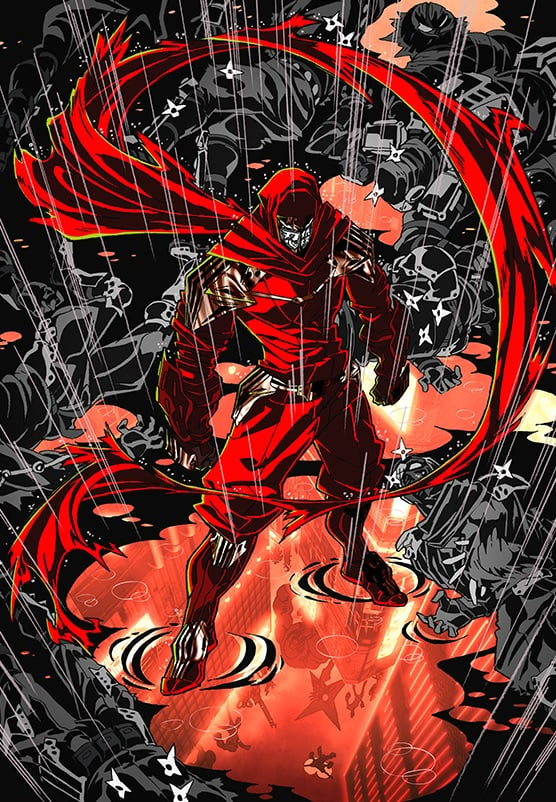

More animation then Inferno Cop? Thank god? This show has an interesting history, two Japanese writers Yu Honda and Leika Suga found these two novels written by Bradley Bond and Philip "Ninj@" Morzez. They translated them to English thinking they were hilarious examples of what Americans think anime is like, but the truth was these writers didn’t ever exist. This was written in fact by Honda and Suga who wrote this as an example of what American weebs think of anime from the 80s and 90s (which is why the show has a 4:3 aspect ratio and intentionally lower resolution). Given this new found parody, who better to help make a parody than Trigger and Amemiya. With more actual scenes of sakuga its still interspersed with paper cut outs fluctuating creating this intentional comedy. Hiroyuki Imaishi, webgen designer saitom, Serere Inato and Yusuke Yoshigaki were all on character design duty with no Chief animation director as the show was made super cheaply. Imaishi and Amemiya did not care about this aspect as Imaishi puts this “I wanted this medium to scare the viewers as much as the first several pages of the book scared me”

Despite that “fuck it” attitude there is actually a decent amount of actual animation in the show with Toshiyuki Sato taking up a brunt of scenes in the 25 episode run. A little too long, but if you enjoy how stupid it is. You’ll love it.
Amemiya went back on to freelancing assisting on Shingo Natsume’s One Punch Man along with Kouno not to far behind, also before Ninja Slayer provided mechanical designs for Tatsuya Yoshihara’s Yatterman Night
On the short spoof anime Space Patrol Luluco Amemiya was back in the assistant director’s chair

Another short gag series for the more ambitious stuff coming in the next two years, Luluco was filled with various references to other Trigger properties like Little Witch Academia and Kill La Kill with all 13 episodes having a 7 minute run time. This was Amemiya’s first series where he was on script duty writing Episode 2, 3, and 11. The first two you can watch here

Amemiya animates the Nova cuts in the OP
Much like Imaishi, Amemiya likes to pack a lot into his dialogue, just upping the absurdity of everything.Amemiya was in charge of directing the very pretty vaporware pilled ED, where no drawings are used, instead plastic character cutouts probably placed around streets near the Trigger offices

After fulfilling that role Amemiya worked alongside Khara, storyboarding a promotional video for the Gravity Rush video game series

It was an all CG effort, but Khara is good at making it look 2D so it checks out.
Amemiya then came onto Little Witch Academia presumably animating the Stanship Masami Obari Brave Might Express Gaine homage after Imaishi’s initial transformation
THE VIDEO WORKS IDK WHATS WRONG WITH THE THUMBNAIL
Amemiya 0:39-0:56
The design of the robot was done by Masaru Sakamoto who was at that time very proud of his super ambitious mecha design.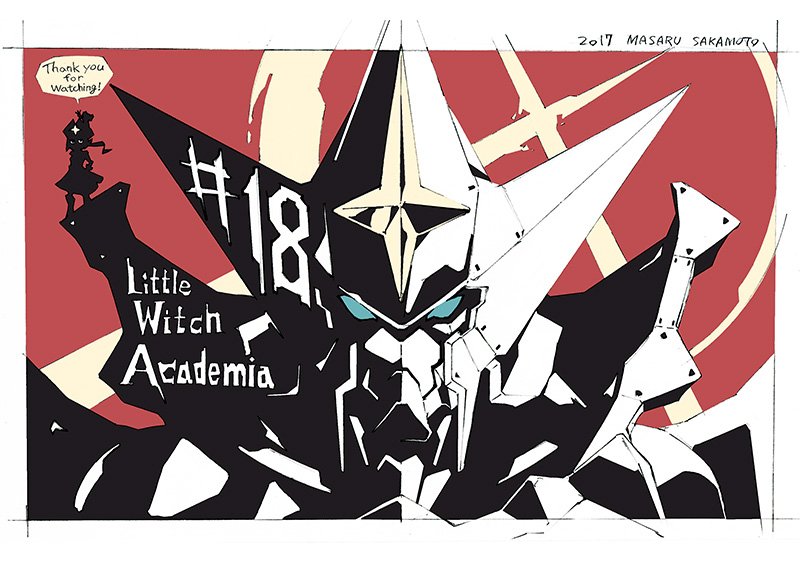
Back to back reference of Obari’s scenes

A whole year of animation side projects, and the time for a Gridman anime was fast approaching. 2017 saw Amemiya assemble an ambitious team of creatives to get ready and make one of the most underrated series in the studio Trigger lineup SSSS Gridman, released in fall of 2018


Work shopping ideas off of the scrapped Gridman F series, Amemiya had nailed a series down with many ideas that needed to be quelled by a serious writer. He approached Tsuburaya productions, to which they offered the talents of Keiichi Hasegawa one of the best writers in tokusatsu and the anime industry, writing on several Ultraman series and a head writer for The Big O. No stranger to tokusatsu and mecha Hasegawa was the perfect choice. “I always considered Hasegawa as someone above the clouds” - Amemiya. With the animation team focusing on new forms for Gridman, and Hasegawa hashing out story beats, the story and animation departments were able to work in perfect synchronicity. The story mainly focuses around the trio of Yuta, Rikka, Sho, and the presumably nice girl Akane Shinjo. One day Yuta awakens from a nap not having any memory of himself, he comes to get to know his classmates Rikka and Sho reassuring him of who he is for the next several days. When a Kaiju attacks the city he is in Yuta is called to by a mysterious voice in Rikka’s parent’s tech shop revealed as the Junk computer coming to life as Gridman. Yuta links with Gridman to fight the kanji and wins, but the city destroyed the day after is rebuilt with no one having any memory of what happened. The abbreviation for SSSS, stands for “Special Signature to Save a Soul” also being a stand in reference for the Americanized version of the original Gridman series, *Super Samurai Syber Squad”. This abbreviation lies heavily in the show’s theming and strengthens the strong narrative of our heroes, and our villain.
Unlike various Trigger shows from before that were loud, boisterous, and in your face SSSS Gridman is quiet, somber, and lets you actively take in the scenery. It feels so antithetical to a lot of what the studio was pushing out, but after being comfortable on producing shows like Kiznaiver it was only right for Amemiya to shake up the studio’s identity even further.


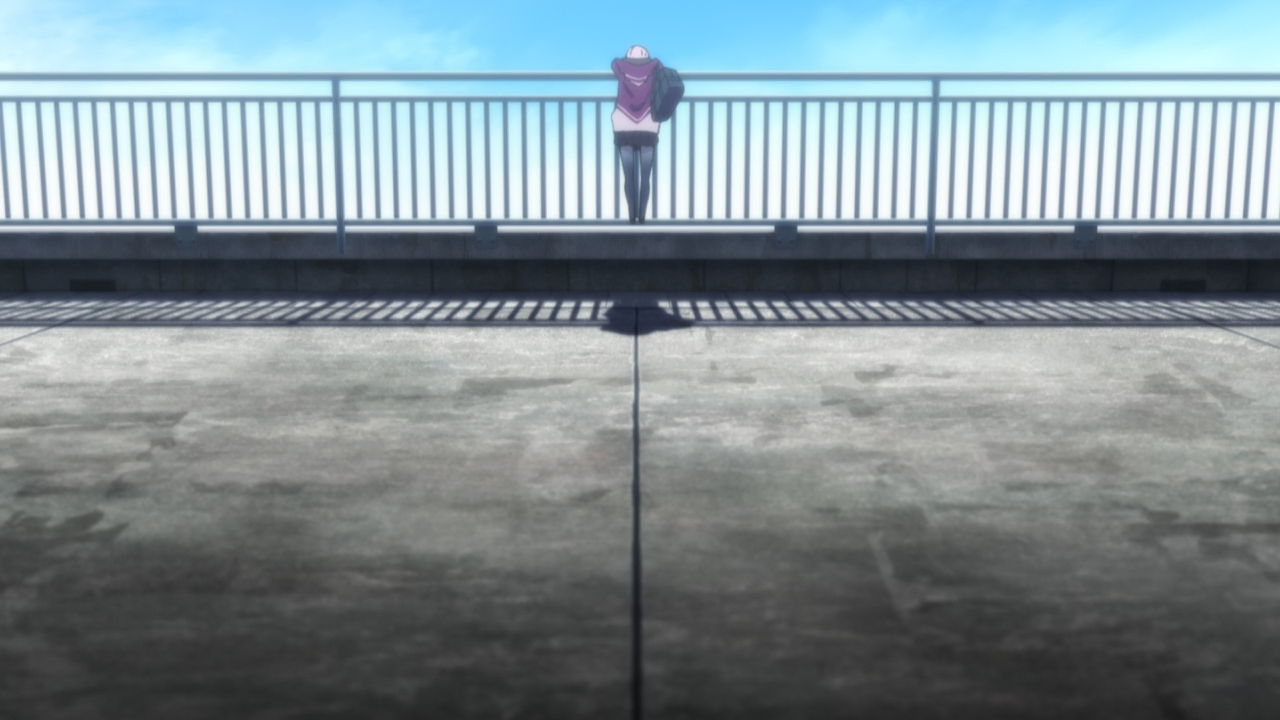
This is even reflected in the animation which is super sparse, and does not use a lot of big and bright Kanada influenced gestures, instead opting for realistic and subtle character traits that can leave a very big impact without doing too much. That personality is also showed in the designs, who were done by Masaru Sakamoto (who was also the head AD, along with Amemiya, Shuhei Handa, and Kengo Saito). It was long overdue for Sakamoto to be on character designs, and his aesthetics going in the show are especially unique for anime. I think this is best reflected in how he draws eyes.


I have never seen this kind of approach before. The thing that immediately stands out is the way Sakamoto highlights the under colored part of the iris going for a strange turbine looking buzzsaw shape that is consistent in every single character design throughout the show. To distinguish some of the characters (female mostly) Sakamoto actually goes all the way to color highlights outside of the pupil and adding a little dot in the middle, which is an unorthodox approach to say the least
In fact Sakamoto almost went for a more traditional look in his early concept art
With this stark shake up in character design, and also the slow paced setting (minus the Kaiju Gridman fights) the voice actors and sound department had to work more then ever with Amemiya at making these scenes feel believable without the strong backing of music, hearing only humming of cars, chirping birds, and city backed ambiance, with music occasionally provided by one of anime’s greatest composers Shiro Sagisu (best known for scoring Evangelion and Bleach).



































